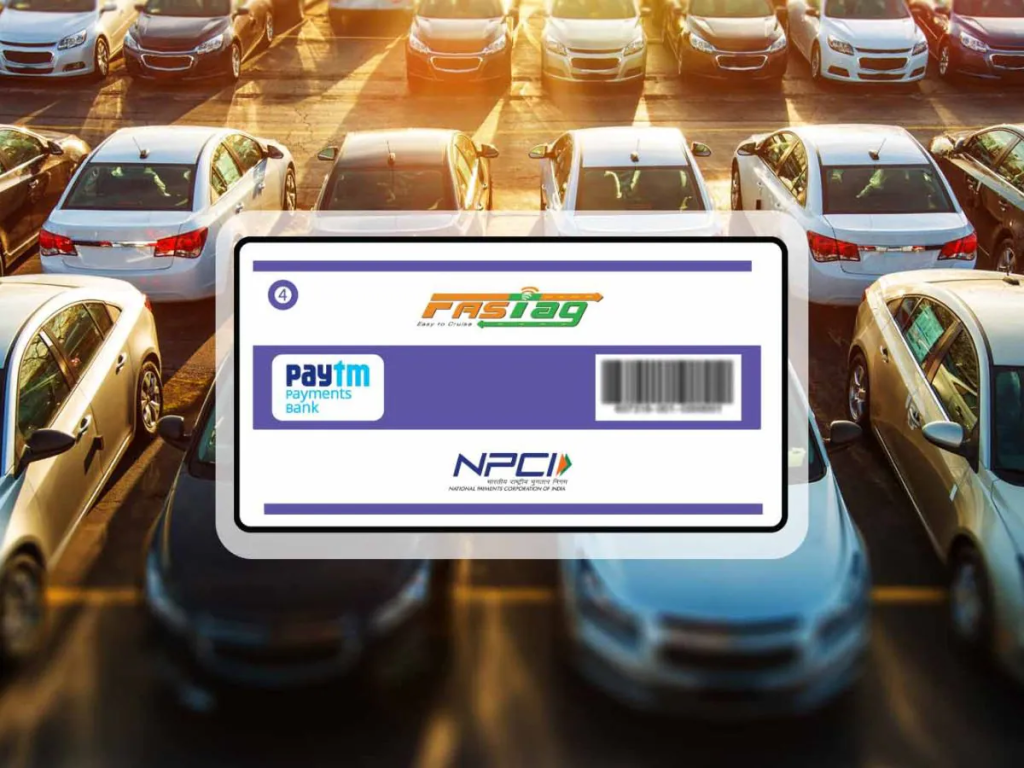FASTag was introduced by the National Highway Authority of India in 2014 under the ‘One Nation, One Tag – FASTag’ scheme to reduce the wait times at toll plazas and simplify the toll payment and collection process. Since then, it has become mandatory for all vehicles operating on national highways to use FASTag.

Recently, NHAI launched the ‘One Vehicle, One FASTag’ initiative to discourage users from using one FASTag for multiple vehicles or linking multiple FASTags to a single vehicle. FASTag has significantly reduced the congestion found at toll plazas, allowing users to make toll payments while still in motion.
How does FASTag work
FASTag uses Radio Frequency Identification technology to automatically deduct the toll fee from the account linked to the FASTag when the vehicle passes through a toll plaza. Scanners, which are strategically placed at toll booths, scan the FASTag that is affixed to the vehicle’s windshield and the toll charge is automatically deducted from the linked bank account or prepaid card.
This ensures that the vehicle does not stop for more than 10 seconds at the toll plaza, thus reducing the wait time and saving fuel. FASTag has revolutionised the toll collection process in the country, benefitting both customers and toll operators.
Benefits of FASTag
- Interoperability: FASTag can be used to make toll payments anywhere in India, regardless of the toll operator. More than 1,200 toll plazas on national and state highways accept FASTag, making it incredibly helpful.
- Cashless payments: By affixing FASTag on your vehicle’s windshield, you can make toll payments without worrying about carrying cash. The amount gets deducted directly from the account linked to the FASTag.
- Saves time and fuel: As you won’t have to stop at toll plazas to make payments, the use of FASTag helps you save time and fuel.
- Easy to recharge: You can buy FASTag from issuing member banks and NBFCs and recharge FASTag in mere seconds through UPI, credit card, debit card, or net banking.
- Simplifies toll payment and collection: The implementation of FASTag streamlines the entire toll payment and collection process, making it ideal for customers and toll operators.
Toll payment landscape in India
In 2021, the Indian government made it mandatory for private and commercial four-wheelers to use FASTag for making toll payments. Over a 5-year period, the NETC FASTag’s revenue has increased from Rs. 3,352 crore (in FY18) to Rs. 54,144 crore (in FY23), contributing to the nation’s economic advancement and infrastructure development. More than 6.9 crore FASTags have been issued to citizens, and a penetration rate of around 97% highlights the widespread acceptance and adoption of FASTag across the national highways.
Besides improving user experience and boosting the efficiency of toll operations, the adoption of FASTag by users has also led to a more accurate assessment of road assets. In turn, this has attracted increased investment in the country’s highway infrastructure. FASTag also facilitates secure and convenient contactless payment for parking fees at various parking facilities across the country.
Read Also:
- What is the Difference Between An Online SIP Calculator and A Compound Interest Calculator?
- How to Keep Your UAN Login Safe and Secure
- Key Points to Know Before Getting Bike Finance for Your First Bike
- How Does Driving Record Affect Car Insurance?
New rules and changes
In 2024, new FASTag guidelines were introduced to enhance the compliance, efficiency, and user experience of the electronic toll collection system. These include:
- One Vehicle, One FASTag initiative, which ensures that a vehicle can only be linked to a single FASTag. If your vehicle had multiple FASTags in the past, your most recent FASTag would remain active while others would get deactivated.
- Users have up to three months (90 days) to link their FASTag to the correct vehicle registration number.
- Users had to update their KYC details by October 31, 2024, to enjoy unrestricted usage.
- FASTag must be linked to your mobile number to receive updates and alerts.
- You must upload clear images of your vehicle’s front, sides, and FASTag. It is recommended that you use cleaning cloth and adhesive support (which you can buy from online marketplaces) to ensure the FASTag is clear and affixed properly.
- FASTags older than five years must be replaced.
- Users must ensure there is adequate balance in their accounts. Otherwise, the FASTag will be hotlisted.
Conclusion
The Indian government has made FASTag mandatory for four-wheelers to ensure a smooth and convenient tolling experience. To this end, the National Highway Authority of India is currently finishing the essential prerequisites to introduce a Global Navigation Satellite System(GNSS)-based tolling system. FASTag has revolutionised the toll collection process in the country, considerably reducing the average waiting period at toll plazas. By using this RFID tag, users enjoy several benefits, including enhanced convenience and greater fuel savings.

Hi, I’m Dev Kirtonia, Founder & CEO of Dev Library. A website that provides all SCERT, NCERT 3 to 12, and BA, B.com, B.Sc, and Computer Science with Post Graduate Notes & Suggestions, Novel, eBooks, Biography, Quotes, Study Materials, and more.




